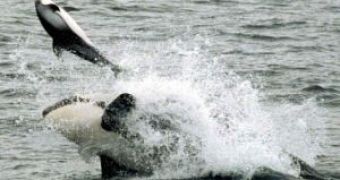The effects of the global warming could be most surprising, affecting human populations in unexpected ways.
As the Arctic Ocean's ice cover melts further and further, this is creating conditions for the killer whales or orca (as they may be known) - which are not true whales but the biggest dolphin species and the biggest predatory marine species - to penetrate deeper towards the North Pole, threatening the livelihood of the native Eskimo or Inuit who traditionally depend on fishing and hunting sea mammals for their food.
"We found a really direct correlation with decreasing ice in the Arctic and more observations of killer whales so we think they are moving further into the Arctic because of less ice," said Steven Ferguson, a scientist at the arctic division of the Canadian fishing ministry.
Canadian researchers were notified in 2006 about killer whales observations by scientists, tour operators and Inuit fishermen who crossed Hudson Bay, a North Canadian inland sea bigger than France.
If in the 1980s, the numbers counted 5 - 10 summer killer whales visiting the area annually, their population jumped to about 30 in 2006, as the Canadian researchers noticed. This is because of the sharp decline of ice cover in the Arctic.
And that's just the beginning: by 2040 the ice could be completely gone during the summer, as a recent study notified.
The Canadian team could not find where the killer whales seen in Hudson Bay were coming from, but they suspect their origin is in the northern Atlantic Ocean, near Iceland or Nova Scotia.
The scientists could not discover what the giant killer whales were eating, either. These predatory mammals eats fish, marine birds and a large array of marine mammals, from seals and sea lions to dolphins (photo) and whales. "We don't know for sure what the killer whales are eating. Some killer whales eat fish but we don't think there is that much good fish food for them in the Arctic. So we are working on the assumption that they are probably eating belugas, narwhals, bowhead (whales) and maybe seals as well," Ferguson said.
"Their migration is worrying fishermen of the Inuit, the indigenous Eskimo people of the region," he said.
"It's a real concern for the hunters. They think it is competition for their food (because) the whales that they would be shooting and eating would be attacked by the killer whales," he said.

 14 DAY TRIAL //
14 DAY TRIAL //